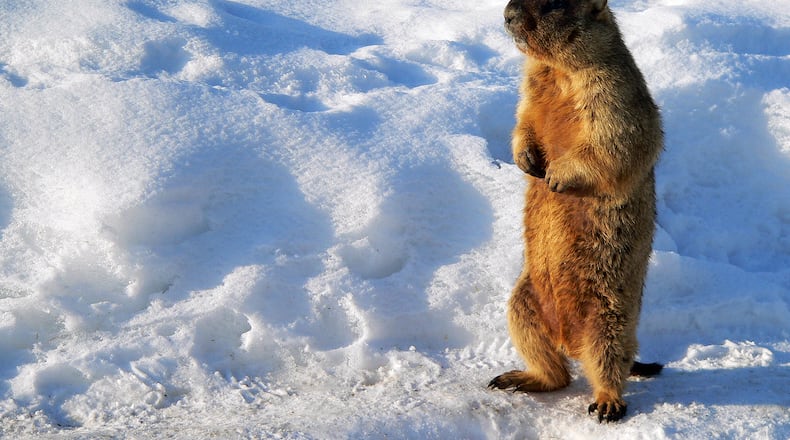It’s how they survive. While many think of hibernating bears, true hibernation is just one strategy to avoid the relative cold of Ohio winters.
Hibernating: Redefining deep sleep
Wandering black bears aside, groundhogs are our most famous true hibernators. Throughout the fall, groundhogs focus on eating, building up and storing the fat that will sustain them nutritionally from late October or early November until February or March, depending on the weather and conditions.
When the weather switches, they go to their burrows, complete with designated sleeping and latrine chambers.
There they will spend the coldest months of the winter. Their heart rate and body temperature will drop from 100 beats per minute to 4 and 99 degrees Fahrenheit to just above freezing at near 40 degrees. They move around periodically, to stretch, use the latrine, you know, the usual stuff. But that’s about it.
With a slowed metabolic system, no food intake, protection overhead, and no worries about which streaming platform the game is on, they are all set.
While a groundhogs snooze from Halloween to after Valentine’s Day (or earlier on Feb. 2nd if you’re the lucky groundhog selected for their special day) is impressive, Thirteen-lined ground squirrels are the champion sleepers. For every parent who said in jest that their teen is sleeping their life away, consider that these little burrow-diggers spend six months of the year hibernating.
That’s pretty impressive sleep. Other true hibernators in Ohio include the Indiana and Little Brown Bats.
Where did they all go?
While true hibernation involves significant metabolic changes, many other animals seem to disappear from the local landscape for weeks at a time. This is especially true during really cold snaps when temperatures plunge. Many of these animals enter a state called “torpor,” which is a type of short-term hibernation. While they sleep for extended periods, possibly even for weeks, they conserve energy and avoid the elements. But ultimately, they have to wake up and either eat food that they have stored or go foraging.
Raccoons, opossums and skunks fall into this camp. Opossums have the added winter disadvantage of furless ears and tails that can lead to frostbite if they are forced out into extreme cold. We’ll see what happens to Armadillos when they make it here.
Chipmunks have the foresight to stockpile nuts in their burrows and can remain underground, even if they’re not truly hibernating.
Tree squirrels — red, grey, and fox varieties — don’t truly hibernate or enter a torpor state. They will, however, take several days off if the weather turns extremely bitter. They stay inside their dens, often shared with other squirrels, conserving body heat and waiting for better weather to retrieve the hoard of nuts they spent the rest of the year storing.
But don’t worry, they’ll be back to your bird feeder in short order.
Relative weather
While many critters are making special adaptations for the Southwest Ohio winter, or leaving altogether, others are finding the winter weather here just to their liking. Great Horned Owls migrate south to Ohio for their nesting season to lay their eggs in January and February in Ohio. The last couple of years, I could count on hearing what I liked to think was the same pair of owls on early morning runs in the dark of winter. Little Dark-eyed Juncos fly down from Canada to spend the winter here.
And every year, a “murder” of 50,000+ crows returns to Springfield to spend the winter with birds of a similar feather. Sometimes, the weather is what you make it.
Devin Meister is a local outdoors and wildlife enthusiast and has a blog called “Average Guy Outdoors.” He is an Ohio University graduate. Reach him at meister.devin@gmail.com.
MORE ONLINE
Ohio Department of Natural Resources: https://ohiodnr.gov
About crows: https://championcitysupply.com/blogs/news/story-behind-the-crow
About the Author



